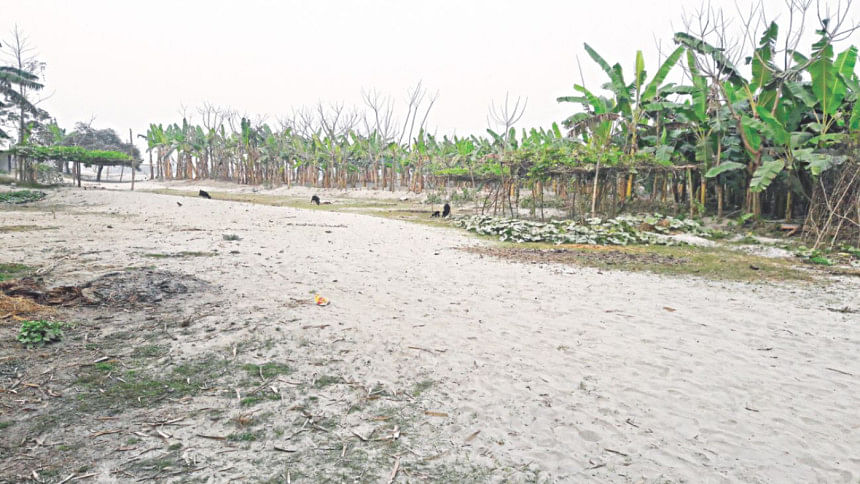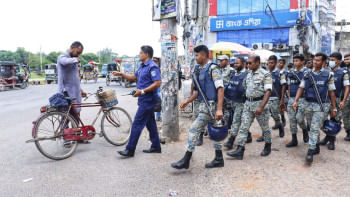Flood turns arable land sandy

The prolonged flood last year covered farmlands in two villages of Sadar upazila with a huge quantity of sand, worrying farmers as they are not sure if they can plant crops on the lands.
Around 300 farmer families of Nagartari and Falimari in Mogholhat union are upset as their 2,300 bighas of arable lands have turned into sandy land where crop farming is uncertain. These arable lands were used to grow different crops, mainly paddy, before August in 2017, but they are lying unused now as they are covered with sand carried by floodwater from upstream last year.
Afsar Ali, 63, of Nagartari village, said he has eight bighas of arable land, but they have turned into sandy land. “Huge quantities of sand were dumped on arable lands by the floodwater of the Dharla river last year, but the sand was not washed away and the lands turned sandy,” he added.
“I cultivated Boro paddy on our five bighas last year, but the land is unused this year as farming paddy is not possible,” said Nur Mohammad, 58, of the same village. “People of 300 families in two villages are dependent on agriculture, and now we do not know how we will manage our livelihood,” he said.
“It is not possible to remove sand from the lands manually, so we do not know when they will be fit to grow different crops, especially paddy,” said Nazrul Islam, 50, of Falimari village, adding that they are preparing to cultivate crops that can grow on sandy land.
Mogholhat Union Parishad Chairman Habibur Rahman said sand has covered the land in two villages of his union, so many villagers are going to the capital and other areas of the country for managing jobs. “A few farmers have started farming sandy land crops, but most of the lands are unused,” he added.
Upazila Department of Agriculture Extension Deputy Director Bidhubhushon Roy told this correspondent that if farmers can remove the sand from their lands they can farm paddy and other crops, otherwise they should go for farming sandy land items like onion, garlic, maize and banana. “It takes15 to 20 years for the sand to be naturally washed away from the arable lands,” he added.

 For all latest news, follow The Daily Star's Google News channel.
For all latest news, follow The Daily Star's Google News channel. 



Comments